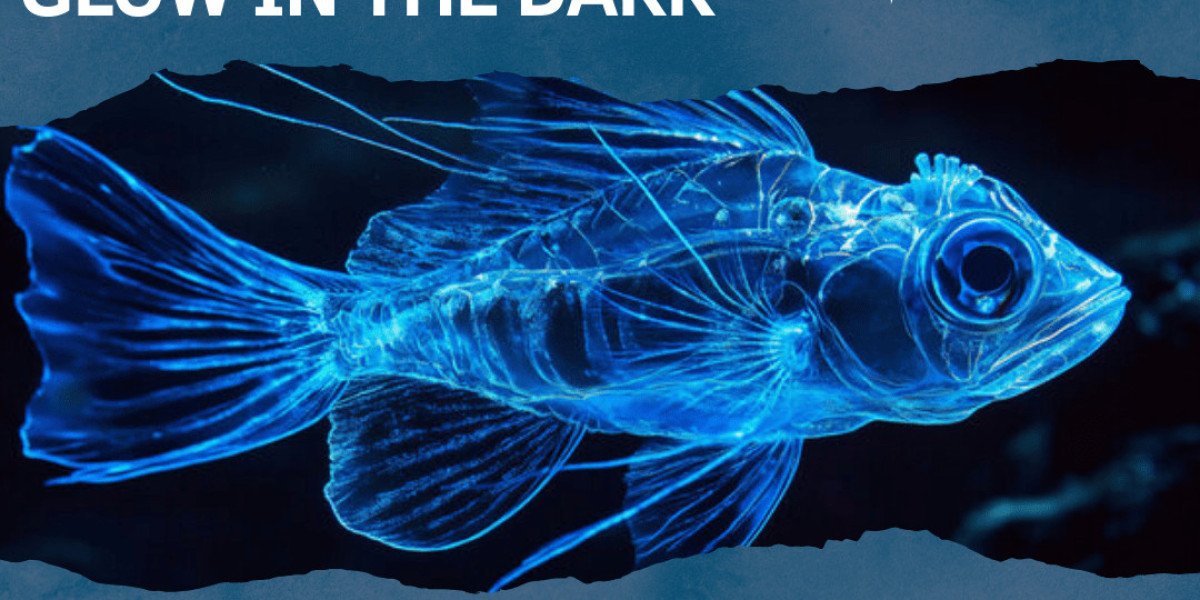Tiny fishes that glow in the dark: Nature's bioluminescent wonders
The great underwater world of the ocean, rich in mystery and wonder, is home to quite a number of fascinating creatures. Among them are small fish that glow in the dark-biological luminescence. Bioluminescence is utilized by several marine species for communication, disguise, or predation. With respect to ecology, glowing fish add other lighted conditions to underwater beauty and perform significant, if not small, things. The article will delve into the magical world of microscopic bioluminescent fish and how they illuminate the dark.
Bioluminescence
Bioluminescence can be defined as the one type of organism that produces self-generated light. It typically arises through the emission of light by a certain chemical reaction between luciferin-a light-emitting molecule-and luciferase-an enzyme. Generally occurring in specialized cells or organs called photophores, bioluminescence may occur in numerous species of fish, jellyfish, and plankton found in different marine ecosystems.
Bioluminescence is a survivorship adaptation in some marine species. The light produced, for example, can lure prey, distract predators, or allow communication among members of the same species. Thus, in seawater, the soft, muted illumination assists the vision of such fish as one huge dazzling entity in the dark ocean and enhances the fish's navigation capability underwater.
Tiny glowing fish: Nature's night lights.
Bioluminescence occurs in many larger organisms like squids and jellyfish but is still observed in many small fish species. Tiny, shining fish include lanternfish, hatchetfish, and flashlight fish. Though relatively small, these fish have adapted to live hidden in the seafloor's dark.
Lanternfish: Bioluminescent organisms are, in fact, the most abundant in the ocean. They are small, from 2 to 15 centimeters in size, living at depths of 2000 meters, all places lit by sunlight. The bodies of the lanternfish have photophores, mostly to camouflage the fish against faint lights of silver and purplish color from above. The fish usually produce light under their bodies by counter-illumination so that predators from beneath cannot see them against the dark background of the ocean.
Hatchetfish: Another interesting instance of bioluminescence is the hatchetfish, named after the broadly flattened body shape, as recognizable as that of a hatchet. These fishes, small in size, measure around 5 to 10 centimeters. Most have their glowing organs situated on their bellies. The glowing underside, especially when faint and used with solar light, makes them hard to see for predators approaching from below. Such bizarre disguise enables them to stay alive in their dark and deep waters.
Flashlight Fish: Flashlight fish are largely found in tropical and subtropical oceans. Known for their ability to generate high-intensity light from special organs underneath their eyes, these organs contain bioluminescent bacteria, which emit a bright light upon activation. They communicate with other fish within their schools and navigate through inky darkness. Some species have the ability to turn their flashlight on and off, using it to project light upon a territory surrounding them or to confuse a nearby predator.
Purpose of Bioluminescence in Small Fish
Bioluminescence in small fish serves many vital functions:
Camouflage: Many bioluminescent fish use light to blend in with the faint light that comes from the water's surface, making it very difficult for the predator to spot them. This counter-illumination helps them to survive in deep oceans, where the majority of the predators come from below.
Attracting Prey: Some animals such as bioluminescent fish use their glow to lure potential prey. For example, the glow of lanternfish or flashlight fish can attract smaller organisms, turning them into easy targets for these tiny predators.
Communication: Glowing fish also use bioluminescence to communicate with other members of their species. The light may be a mating signal that helps fish locate potential mates in the dark depths, or it could be a way to coordinate group movements or warn of danger.
Defense: Some species like the flashlight fish use their light as a defense mechanism. When threatened, they can produce sudden bursts of light that confuse or startle predators, thus ensuring they get time to escape.
Why Bioluminescent Fish Matter
Bioluminescent fish are very important to ocean ecosystems. Their ability to produce light helps maintain balance in the food chain, from prey attraction to predator avoidance. Also, these tiny glowing fish deposit to the rich biodiversity of the ocean and provide insight into the incredible adaptations developed by marine life to survive some of the most extreme conditions on Earth.
As the ocean ecosystems continually face threats due to man-induced climate changes, it could have been very vital to get an understanding of the abilities of these tiny glowing fish, which are unique in themselves. Their very existence depends upon the health of their habitat, which is being hammered by pollution, overfishing, and habitat destruction.
Conclusion
Among nature's tiny, mysterious creatures are the tiny bioluminescent fish. by virtue of their capability to glow at all times, they have developed certain adaptations for survival, enabling them to cruise and plod life in the great depths. These glowing fishes provide one of the greatest examples of how life in the oceans has adapted to the marginalities of both darkness and depth: camouflage, attraction of prey, or means of communication; all goals accomplished by dazzling brightness. As the mysteries of the ocean continue to unveil, these little light-giving fishes remind us of the vital beauty and complexity of the world's underwater life.








